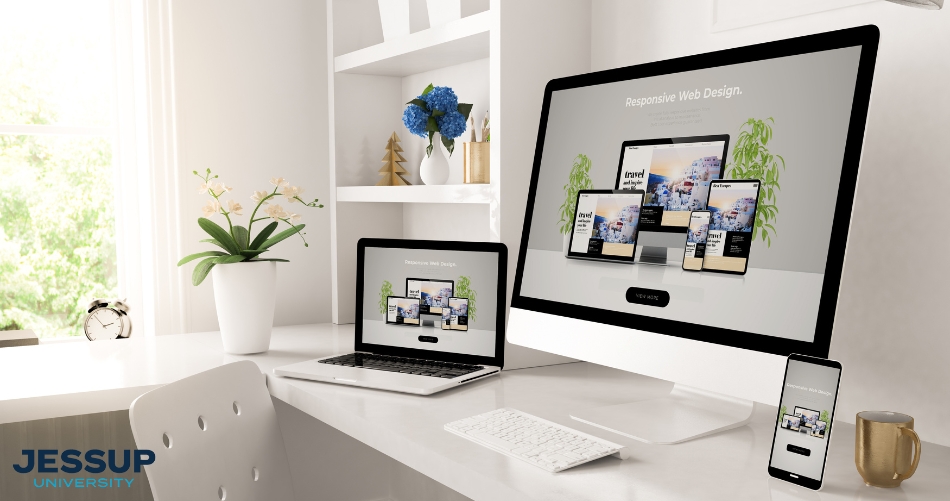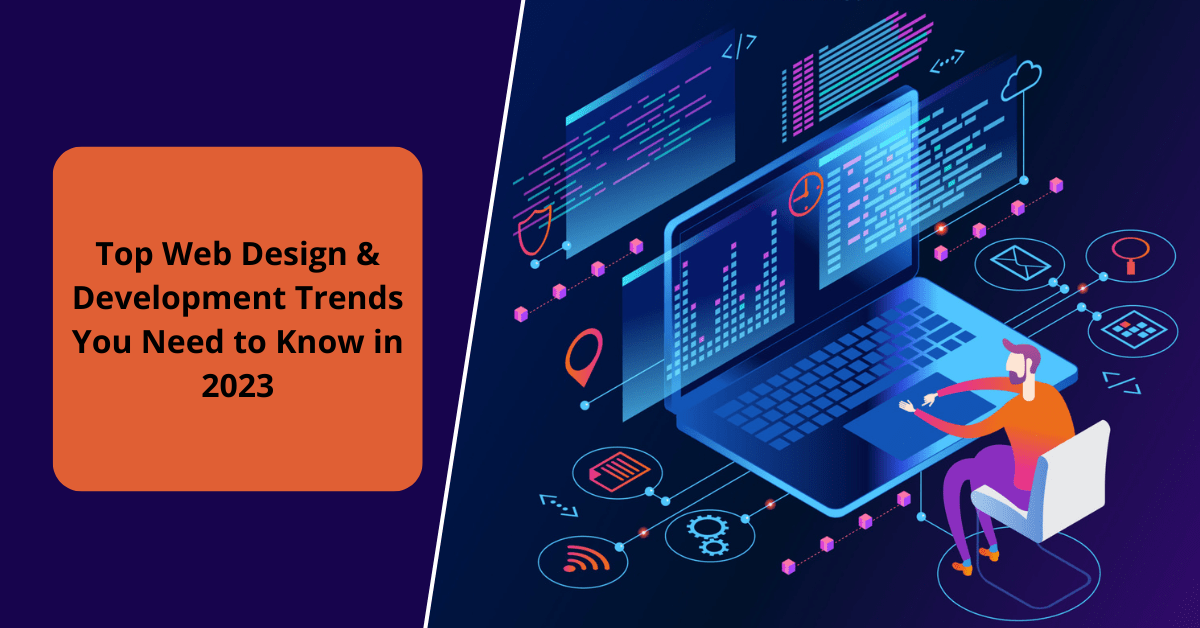Discovering the Various Types of Website Design and Their One-of-a-kind Advantages
The landscape of Web layout includes a range of styles, each offering distinctive advantages that accommodate various customer needs. Minimal and flat layouts emphasize quality, while receptive and worldly designs improve flexibility across tools. Typography-driven and illustratory techniques intend to boost involvement and emotional resonance. Recognizing these diverse kinds can considerably impact customer experience and brand perception. What exists underneath the surface area of these style selections?
Minimal Web Style

Minimal Web style commonly integrates a restricted color palette and simple typography, which not just boosts aesthetics however also reinforces brand name identification. The reduced intricacy can result in much faster packing times, additionally boosting user fulfillment. Additionally, by decreasing aesthetic clutter, users can engage with web content extra effectively, resulting in enhanced understanding and retention. Overall, minimalist website design cultivates a smooth individual experience, making it a popular selection for brands aiming to communicate clearness and expertise in their on the internet visibility.
Responsive Web Design
Responsive website design has actually become vital in today's digital landscape, making sure mobile compatibility for individuals throughout various gadgets. This method greatly enhances customer experience by offering smooth navigation and accessibility, regardless of screen size. As even more individuals access the Web on tablets and smartphones, the relevance of receptive style remains to grow.

Mobile Compatibility Significance
As mobile phone usage continues to rise, making certain internet sites work with numerous screen dimensions has actually ended up being important for reliable interaction and engagement. Mobile compatibility, often achieved through receptive Web design, allows websites to adjust flawlessly to mobile phones, tablet computers, and various other tools. This versatility not just reaches a more comprehensive audience however additionally improves brand trustworthiness. An internet site that works well on smart phones shows professionalism and trust and interest to customer demands. Additionally, online search engine focus on mobile-friendly websites in their positions, making compatibility a critical factor for on the internet presence. By buying mobile compatibility, companies can boost their electronic presence and cater to the growing variety of users that access details on the move. Focusing on mobile-responsive layout is crucial in today's digital landscape.
Improved User Experience

Apartment Design
Flat design is a minimalist strategy to Web design that emphasizes simplicity and clarity. By getting rid of three-dimensional elements such as darkness, slopes, and structures, flat layout produces a visually attractive interface that focuses on material and functionality. This style promotes an instinctive navigating experience, as individuals can quickly identify essential attributes and actions without distraction.
One of the main benefits of flat style is its responsiveness throughout various devices and screen sizes. Its clean lines and straightforward layouts adjust perfectly, making sure a constant experience for users on mobile, tablet, or desktop systems. In addition, flat style often includes vibrant colors and typography, enhancing aesthetic impact and brand name recognition.
In addition, the simplicity inherent in level style brings about faster filling times, which contributes positively to customer fulfillment - branding. On the whole, level layout continues to be a popular option for contemporary Web growth, lining up with modern aesthetic choices while providing outstanding usability
Product Design
Material Style stands for a design language developed by Google that concentrates on creating a user-friendly and natural user experience across electronic systems. This approach highlights using grid-based layouts, responsive animations, and deepness impacts such as illumination and shadows, which aid to develop a feeling of power structure and spatial partnerships. By resembling the physical globe, Product Design permits users to connect with digital user interfaces in an extra all-natural and engaging manner.
Among the essential benefits of Product Style is its adaptability throughout numerous gadgets and display sizes, making sure a regular experience for customers. Additionally, it promotes a clear visual language that boosts use, making it simpler for individuals to browse complex applications. The consolidation of dynamic shades and vibrant typography likewise plays a necessary function in accentuating crucial elements, thereby improving total user engagement - web design. As A Result, Material Layout has ended up being a preferred selection amongst programmers looking for to develop practical and aesthetically attractive sites
Typography-Driven Layout
Typography-Driven Layout concentrates on the critical use of kind to enhance the useful and visual elements of a site. This design strategy prioritizes fonts, font sizes, spacing, and pecking order to produce visual interest and guide user experience. By carefully selecting typography, developers can convey brand identification and stimulate feelings, making the material more available and interesting.
Effective typography enhances readability and usability, making sure that users can quickly take in and navigate the website info. The appropriate combination of type can also develop a clear visual power structure, allowing individuals to promptly identify key messages and phones call to activity.
Moreover, a typography-driven technique can be adapted to numerous gadgets, have a peek at these guys making certain uniformity across platforms. This flexibility is essential in today's multi-device landscape, where individual experience is vital. Ultimately, Typography-Driven Design serves not only as a creative choice however also as a functional element that greatly impacts a web site's performance.
Illustrative Web Style
Illustratory website design uses visual storytelling methods that can considerably enhance individual interaction. By incorporating distinct illustrations, sites can produce a remarkable brand name identity that reverberates with their audience. This approach not only mesmerizes visitors but likewise connects messages in an aesthetically compelling manner.
Visual Narration Strategies
A wide variety of Web developers employ visual narration methods to create immersive and interesting individual experiences. This method integrates format, typography, and images to tell a tale that reverberates with users on a psychological degree. By integrating compelling visuals, developers can properly convey messages and evoke feelings, guiding site visitors with a brand name's journey. Infographics, animations, and interactive components serve to improve stories, making intricate information a lot more unforgettable and accessible. Furthermore, visual narration can establish a cohesive brand identification, as constant images and styles enhance core worths and messages. Ultimately, this technique not just astounds individuals yet also fosters a much deeper link with the content, encouraging expedition and retention. Via skilled application, visual storytelling changes standard Web experiences right into significant and dynamic interactions.
Enhancing User Engagement
Effective Web style substantially enhances individual involvement by leveraging illustratory components that draw attention and foster interaction. Pictures can simplify complicated concepts, making them much more memorable and approachable for customers. They damage the uniformity of text-heavy web pages, producing visual breaks that welcome exploration. Additionally, special illustrations can evoke feelings, encouraging individuals to get in touch with the content on a much deeper level. Interactive elements, such as animations or float effects, can likewise boost involvement by welcoming users to get involved actively instead of passively consuming information. This approach not only maintains visitors on the site longer but also raises the likelihood of return visits. Eventually, effective illustrative Web layout transforms the individual experience, making it a lot more impactful and satisfying.
Branding Via Image
Visual aspects play a considerable role fit a brand's identity, and pictures are a powerful device in this respect. Illustrative website design enables brands to share their distinct personality and values through customized artwork. This approach fosters a much deeper emotional connection with the audience, improving memorability and engagement. By incorporating illustrations, brand names can separate themselves in a congested market, developing a distinctive aesthetic narrative that reverberates with their target group. In addition, images can streamline complicated principles and make web content more obtainable, properly communicating messages in an interesting manner. Generally, branding with image not just improves the user experience but likewise reinforces brand name acknowledgment, making it a beneficial technique for businesses intending to develop a solid on-line presence.
Often Asked Concerns
How Do I Choose the Right Web Layout Type for My Business?
To pick the appropriate website design type for a company, one ought to examine objectives, target audience, and market requirements. Evaluating customer experience and functionality will certainly guide the option process for excellent interaction and performance.
What Equipment Are Finest for Producing Different Web Design Designs?
Popular devices for developing diverse Web design styles consist of Adobe XD, Figma, Lay Out, and WordPress. Each offers distinct functions customized to different click to read design demands, making it possible for developers to build useful and visually enticing websites successfully.
Just How Much Does Specialist Website Design Normally Price?
Professional Web design generally costs in between $2,000 and $10,000, depending upon complexity, attributes, and developer expertise. Personalized options and recurring maintenance may boost costs, while layouts can supply even more affordable choices for simpler tasks.
Can I Incorporate Several Web Style Keys In Successfully?
Yes, combining multiple Web style types can be effective. By integrating elements from numerous designs, developers can click this develop distinct, engaging individual experiences that accommodate diverse audiences while enhancing functionality and visual appeal.
Exactly How Do Style Fads Impact Customer Experience and Engagement?
Layout patterns substantially influence user experience and involvement by boosting aesthetic appeal, improving navigating, and fostering emotional links - website development. Remaining updated with trends allows developers to produce intuitive interfaces that resonate with customers and motivate long term interactions
Minimal and level layouts emphasize clarity, while responsive and worldly designs boost versatility across devices. It might appear counterintuitive, minimalist Web layout stresses simpleness to boost user experience. Responsive Web design plays a crucial role in enhancing individual experience by guaranteeing that a site adapts seamlessly to numerous screen dimensions and devices. Level style is a minimalist method to Web design that highlights simpleness and clearness. Material Layout represents a style language created by Google that focuses on developing a instinctive and natural individual experience throughout digital platforms.